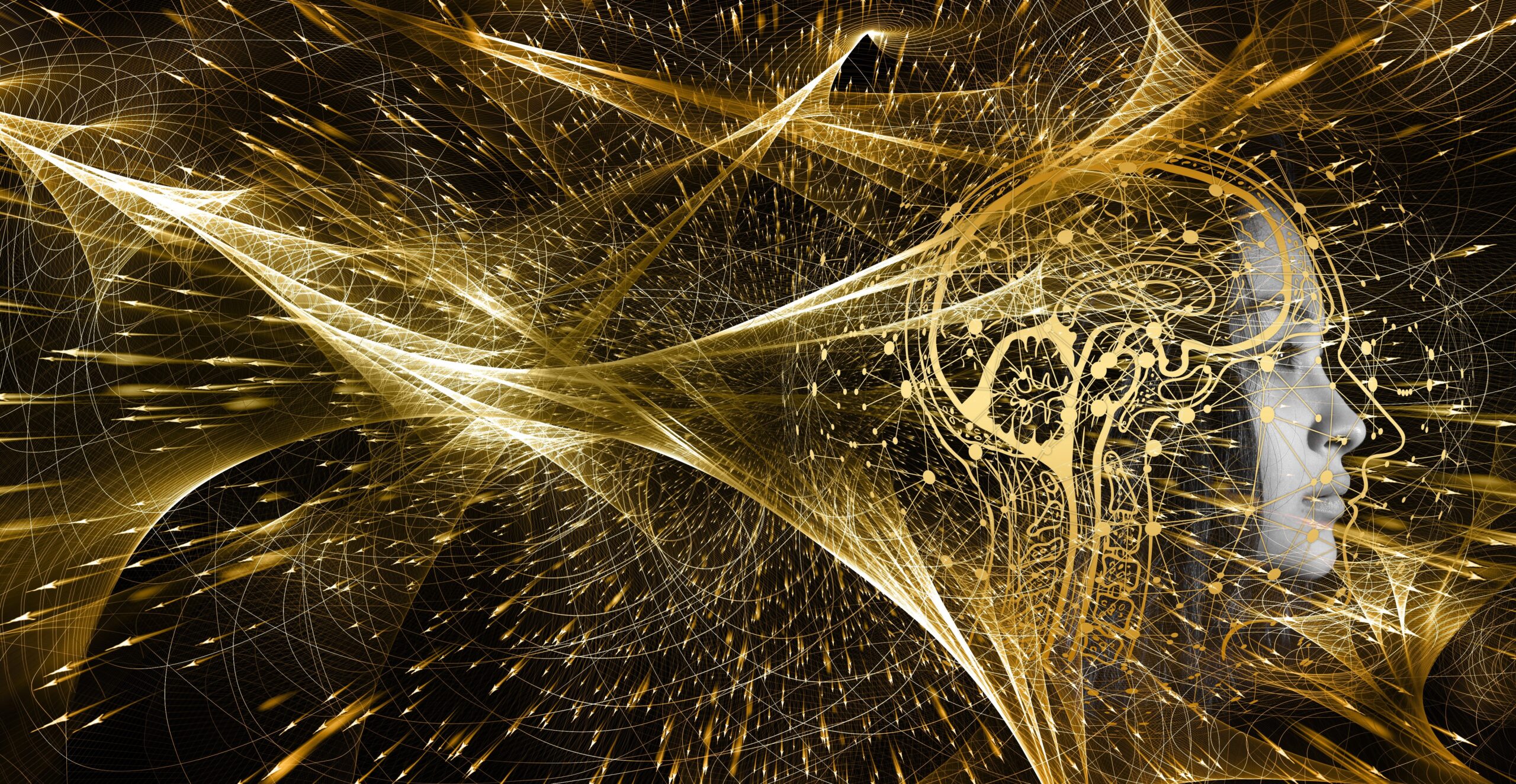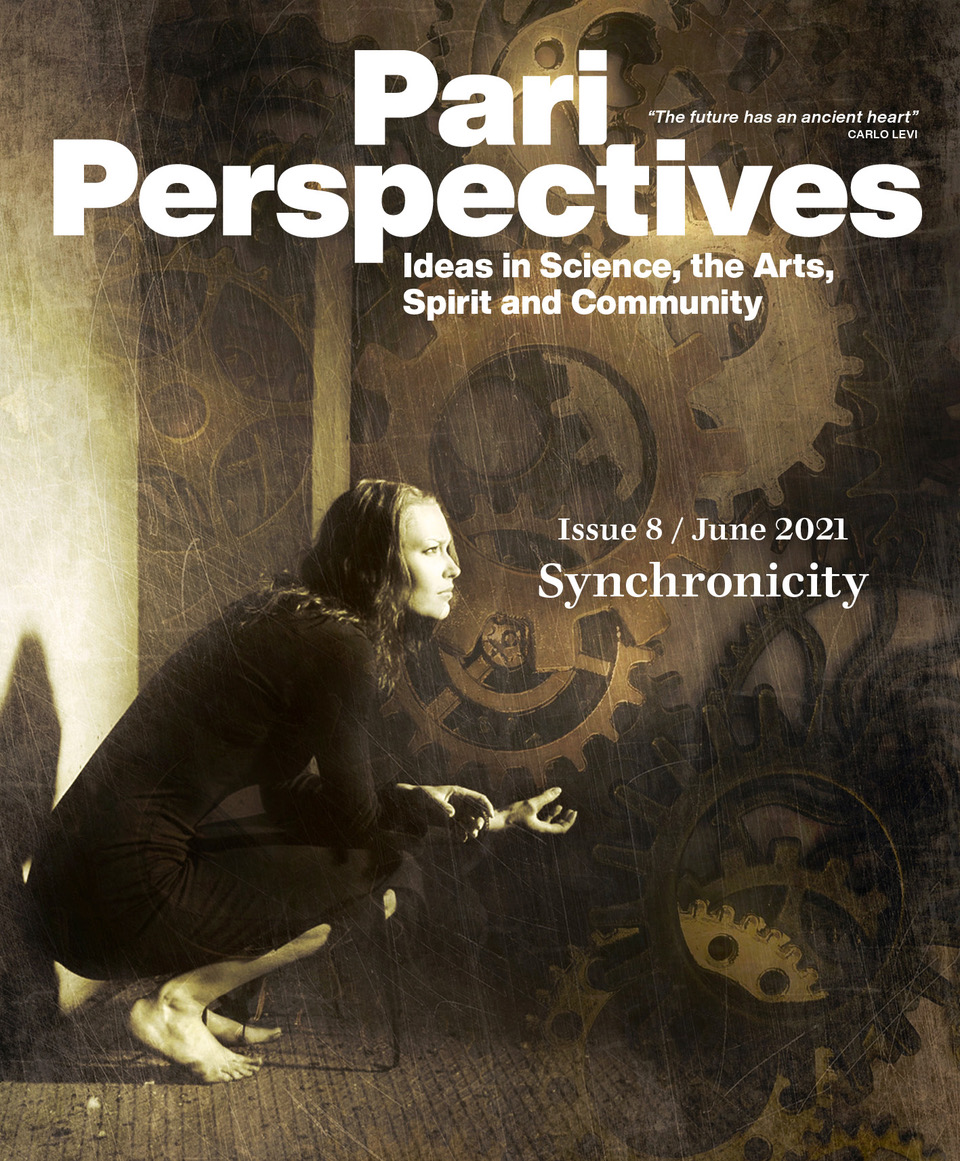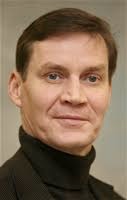Your cart is currently empty!

Meaning in Synchronicity
the April 2024 issue of Pari Perspectives.
One of the major implications of the disenchanted worldview (Weber, 1919) that still underpins most scientific and academic discourse in the modern Western world, if not globally, is that the physical world, the world so spectacularly comprehended by science, is fundamentally devoid of meaning. And since, in most versions of the disenchanted worldview, life and consciousness are considered to be epiphenomena of physical processes, they too, in all their manifold expressions, are also ultimately devoid of meaning. Indeed, the experience of meaning itself, in this view, is an epiphenomenon of physical processes in the brain, from where it is then projected onto the world.

This is an extraordinary and profoundly counterintuitive view of reality, and one with serious practical consequences. For if the world is ultimately devoid of meaning beyond that which human subjects delusively project onto it, it is difficult to develop compelling arguments against the kind of predatory and exploitative relationships towards the world—the natural environment, other cultures, societies, individuals, and even ourselves—that are so widespread today as well as in the historical record (Bilgrami, 2010, pp. 148–152).
It was partly against such a worldview that Carl Jung (1875–1961) developed his psychological model and, very specifically, his concept of synchronicity. Where the dominant science of Jung’s day excluded meaning from its purview—above all, on the principle that values cannot be derived from facts—Jung (1952b), with the concept of synchronicity, precisely postulated that meaning is an intrinsic feature of reality and should be integrated into an expanded form of science. He defined synchronicity concisely as ‘meaningful coincidence’ (par. 827), stated that it expresses ‘an objectivemeaning which is not just a psychic product’ (par. 915), and argued that it introduces this factor of ‘a priori meaning’ into ‘our knowledge and description of nature’ (par. 962).
Given the central role that Jung ascribed to meaning in synchronicity, it is important to understand what he meant by such meaning. In this short paper, I shall note some of the main aspects of Jung’s use of the term ‘meaning’ in relation to synchronicity. This should help us to see why synchronicity, as a principle of acausal connection through meaning, is such a pivotal part of Jung’s challenge to the worldview of disenchantment. I shall highlight three aspects of Jung’s (sometimes implicit) understanding: the multiplicity of levels of meaning in synchronicity; the role of the archetype, understood as psychoid, in underpinning those levels of meaning; and the participatory nature of the experience of meaning in synchronicity.
Levels of Meaning
Jung himself did not present a systematic account of how he understood meaning in synchronicity. However, Robert Aziz (1990), in his close examination of the concept of synchronicity in relation to Jung’s psychology of religion, was able to identify ‘four interrelated layers of meaning’ implied in Jung’s discussions of synchronistic experiences (pp. 64–66, 75–84). The first of these levels is simply the fact of two or more events paralleling one another. The paralleling is by virtue of a shared content or meaning, such as, in Jung’s famous example, his patient’s dream and the appearance of the insect at his consulting room window involving the same or very similar content of a scarab or scarabaeid beetle. This understanding of meaning is expressed many times in Jung’s (1952b) principal essay on synchronicity. For example, he refers to images standing ‘in an analogous or equivalent (i.e., meaningful) relationship to objective occurrences’ (par. 856) and to ‘the simultaneous occurrence of a psychic state with a physical process as an equivalence of meaning’ (par. 865). This is a very basic, almost linguistic sense of meaning (Giegerich, 2012, p. 502).

The second level of meaning consists of the emotional charge or ‘numinosity’ attending synchronistic events. Jung (1952b) notes the ‘important role’ that ‘the emotional factor’ plays in synchronicities (par. 846), which indeed are sometimes experienced as being ‘dependent on affects’ (par. 860). This emotional charge is a source of non-rational or pre-reflective meaning, suggested in Jung’s example by the way in which, when the synchronicity occurred, his patient’s ‘rationalistic attitude’ was sufficiently disturbed to enable her ‘natural being’ to ‘burst through the armour of her animus possession’ (par. 845). This level of meaning complements and destabilises the first level, evoking beneath the rationally graspable paralleling of content between the psychic and physical events a dimension of deep emotionality, otherness, and ambiguity.
The third level of meaning is the significance of synchronistic events interpreted subjectively, from the point of view of the experiencers’ personal developmental needs and goals, unconscious as well as conscious—in Jungian terms, their individuation. Although Jung, rather surprisingly for a psychotherapist, does not write much about this level of meaning in synchronicities, it is suggested by his comment regarding ‘how much these inner experiences [viz. synchronicities] meant to my patients’ (1952b, par. 816). More specifically, in his famous example, it is expressed by the way in which, following the synchronistic event and presumably also Jung’s and the patient’s attempts to understand it and relate it to the patient’s situation, ‘the [patient’s] process of transformation could at last begin to move’ (par. 845) and ‘The treatment could now be continued with satisfactory results’ (1951b, par. 982).
The fourth and last of the levels of meaning is the significance of the synchronicity objectively, that is, as the expression of archetypal meaning which is transcendental to human consciousness. From the symbolism of his example, Jung (1952b) infers that the objective, transcendental meaning involved was that of the archetype of rebirth, since ‘The scarab is a classic example of a rebirth symbol’ (par. 845). The greatest number of explicit references to meaning in Jung’s essay concerns this objective or archetypal level. He refers to meaning that can ‘exist outside the psyche’ (par. 915), ‘outside man’ (par. 942), and is ‘self-subsistent’ (par. 944), ‘transcendental’ (par. 915), and ‘a priori in relation to human consciousness’ (par. 942). It is the postulation of this kind of objective meaning that most radically challenges the perspective of disenchantment, for disenchantment, as I noted at the outset, implies that there is no such meaning, or at any rate none that can receive any support from the findings of science.

Recognising that this is the kernel of his argument, Jung (1952b) devotes many pages to setting out some of the considerations that, for him, point to the existence of objective meaning. He does this with acute awareness of the human contribution to the emergence of meaning. For example, he acknowledges that, as usually understood, ‘meaning is an anthropomorphic interpretation’ (par. 916); that ‘What that factor which appears to us as “meaning” may be in itself we have no possibility of knowing’ (par. 916); and specifically that ‘we have absolutely no scientific means of proving the existence of an objective meaning which is not just a psychic product’ (par. 915)—not least since, as he would later write to Erich Neumann (10 March 1959), ‘Meaningfulness always appears to be unconscious at first, and can therefore only be discovered post hoc; hence there is always the danger that meaning will be read into things where actually there is nothing of the sort’ (1976, p. 495).
Chief among the considerations that led Jung (1952b) nonetheless to postulate objective meaning were synchronistic phenomena themselves, whether spontaneous or induced, with their apparent ability to transcend the limitations of space and time to reveal ‘“absolute knowledge” […] a knowledge not mediated by the sense organs […], knowledge of future or spatially distant events’ (par. 948). In addition, by way of cultural support, he adduced in Chapter 3 of his main essay on synchronicity a range of Chinese, Greek, Medieval, and Renaissance forerunners of his idea of synchronicity—notions of Tao, the sympathy of all things, correspondences, microcosm and macrocosm, and pre-established harmony—each of which presupposes the existence of objective meaning (pars. 916–946). As further indications, he referred to dreams whose content seems to suggest the idea of self-subsistent meaning (pars. 945–946); to the ‘“meaningful” or “intelligent” behaviour of the lower organisms, which are without a brain’ (pars. 947–948); and to out-of-body-experiences or, as he refers to them, ‘remarkable observations made during deep syncopes’ (pars. 949–955).
The Archetype as Psychoid
The existence of levels of meaning of the kind discussed above is not idiosyncratic to Jungian thought. As the psychologist Roy Baumeister observes in his interdisciplinary study Meanings of Life (1991), depth psychologists, literary critics, and even diplomats frequently recognise different levels of meaning (p. 20). When they do so, what the levels usually refer to is, roughly, ‘the quantity and complexity of the relationships that are subsumed’:
[T]he simplest uses of meaning associate labels (such as names) to specific, immediate objects. These uses of meaning tend to be concrete and to be limited in time. In contrast, the highest levels of meaning may refer to complex, far-reaching relationships that transcend the immediate situation and may even approach timeless or eternal perspectives. […] In an important sense, higher level meanings refer to contexts for lower levels. (pp. 20–21)

What interrelates the four levels of meaning identified by Aziz in Jung’s thought is the concept of the archetype. For while Aziz (1990, p. 66) calls the fourth, objective level of meaning the ‘archetypal level,’ each of his other three levels of meaning also depends on the presence of the archetype. The shared meaning by virtue of which two or more events are taken to have parallel content and so to be in a synchronistic relationship derives from an archetype: for example, in Jung’s (1952b) paradigmatic synchronicity, underlying the scarab symbol in both its psychic and its physical appearances is the archetype of rebirth (par. 845). The numinous charge that Jung finds associated with synchronicities is something that, he argues, stems from the presence of an activated archetype (par. 841). And insofar as the subjective level of meaning is evaluated with reference to the developmental process of individuation, this too will also be based on archetypes, since the activation of archetypes—not least the shadow, anima/animus, and self—is intrinsic to individuation for Jung (1928, pars. 266–406; 1951a, pars. 1–67). Jung (1952b) in fact explicitly identifies archetypes as providing the basis of synchronicity: ‘by far the greatest number of synchronistic phenomena that I have had occasion to observe and analyse,’ he writes, ‘can easily be shown to have a direct connection with the archetype’ (par. 912; see also pars. 845–846; 1976, pp. 437, 447, 490). Consistently with Baumeister’s observation, the fourth, archetypal level of meaning in synchronicity can be seen both as the highest level and as providing the context for the other levels.
In his synchronicity essay Jung (1952b) writes that archetypes ‘constitute the structure of the collective unconscious’ (par. 840), that they are ‘formal factors responsible for the organization of unconscious psychic processes: they are ‘“patterns of behaviour,”’ and that ‘they have a “specific charge” and develop numinous effects which express themselves as affects’ (par. 841). This is all consonant with what Jung had been writing for years. But in the synchronicity essay he articulates some novel characteristics that reveal archetypes to be not just psychic but what he calls ‘psychoid’ factors. In characterising archetypes as ‘psychoid’ he means that they cannot be fully represented psychically and therefore cannot simply be equated with ‘perceptible psychic phenomena’ (par. 840). At an irrepresentable level, he suggests, archetypes can structure matter as well as psyche—and not just separately but at the same time in respect to the same pattern of meaning. Thus, of archetypes as ‘psychoid factors’ he writes:
These are indefinite, that is to say they can be known and determined only approximately. Although associated with causal processes, or ‘carried’ by them, they continually go beyond their frame of reference, an infringement to which I would give the name ‘transgressivity’, because the archetypes are not found exclusively in the psychic sphere, but can occur just as much in circumstances that are not psychic (equivalence of an outward physical process with a psychic one). (par. 964)
For Jung, the psychoid nature of archetypes is most clearly evinced by number archetypes. In the synchronicity essay itself this is largely left implicit. There Jung (1952b) highlights the archetypal character of natural numbers (par. 870) but he primarily focuses on the psychic properties of number archetypes and their role in divination procedures (pars. 863–870). However, in a subsequent letter to Wolfgang Pauli (24 October 1953) he is more explicit about the broader significance of number archetypes as the paradigmatic psychoid factors. As ‘the simplest and most elementary of all archetypes,’ he writes, number archetypes can help ‘to locate and describe that region which is indisputably common to both [physics and psychology]’ (Meier 2001, p. 127). For numbers ‘possess that characteristic of the psychoid archetype in classical form—namely, that they are as much inside as outside’ (p. 127). This, Jung suggests, is why ‘equations can be devised from purely mathematical prerequisites’ and these equations later ‘will turn out to be formulations of physical processes’ (p. 127). He thus concludes that, ‘from the psychological point of view at least, the sought-after borderland between physics and psychology lies in the secret of the number’ (p. 127).
Meaning and Participatory Awareness
Conceiving the meaning in synchronicities as multi-levelled and as underpinned at all levels by the psychoid archetype helps to clarify other aspects of Jung’s perspective. For instance, such a conception facilitates understanding of how coincidences, whose content—such as the appearance and behaviour of a beetle—might at the basic level of paralleling seem rather trivial, can readily open into deeper levels of numinous, transformational, and transpersonal meaning, especially when interpreted with sensitivity to symbolism.
Again, the view that the meaning in synchronicities is underpinned by the archetype conceived as psychoid means that such meaning could manifest itself in outer physical events as much as in inner psychic events. This by itself puts pressure on the disenchanted view that all meaning stems from the human subject, from whom it is then projected onto the world. Indeed, Jung once commented that, in light of synchronicity, ‘the concept of projection should be revised completely’ (Quispel, 1995, p. 19).

However, while Jung unmistakeably argued for a conception of meaning as not only subjective but also objective, self-subsistent, a priori, or transcendental, as he variously referred to it, this objective meaning was not conceived as something entirely separate from the experiencing subject, as though there was a meaning out there that the experiencer could dispassionately observe. One consideration is that the objective meaning could be carried by the subjective, transformational processes of an individual, as in the case of Jung’s patient, whose personal ‘rebirth’ was arguably an instance of a more collective process that, as archetypal, is, as it were, cosmically inscribed and indeed, as I have argued elsewhere (Main, 2013, pp. 134–144; 2019, pp. 16–18), may also simultaneously have been manifesting itself at a cultural level, as the expression of a needed ‘rebirth’ within Western culture.
Arguably more important, however, is that the concept of synchronicity breaks down, or at least renders ambiguous, the relationship between subjective and objective meaning. As Jung (1952b) remarks in the final chapter of his essay, synchronicity shows the possibility of ‘getting rid of the incommensurability between the observed and the observer’ and thereby bringing about a ‘unity of being’ (par. 96). This leads to a much more participatory relationship, in which the subject or self is not separate from the object or world and in which, moreover, both self and world are liable to be transformed. Such participatory consciousness, in which human subjectivity is recognised as part of the world’s objectivity—even, as Richard Tarnas puts it, as ‘the organ of the world’s own process of self-revelation’ (1991, p. 434)—has often been touted as the kernel of the needed response to disenchantment (Berman, 1981, pp. 135–152; Tarnas, 1991, pp. 433–440; Brown, 2020, pp. 161–189). For, among other things, such a unity of being, with its implied interconnectedness between the self and the world, would likely lead to more salubrious, cooperative relations between humans and nature, among humans, and even towards ourselves than the divided, competitive state fostered by disenchantment.
In conclusion, it is worth emphasizing that Jung’s proposal that the archetype is psychoid and can therefore structure or arrange physical as well as psychic events is meant to apply to the fundamental nature of matter itself. As Jung wrote to Pauli (7 March 1953): ‘[I]n cases of synchronicity, they [i.e. archetypes] are arrangers of physical circumstances, so that they can also be regarded as a characteristic of Matter (as the feature that imbues it with meaning)’ (Meier 2001, p. 101; emphasis added). Moreover, because the meaning archetypes imbue is multileveled, ranging from basic levels of ordering, paralleling, and signifying to the kinds of higher levels that inform individual transformation and the framing of meanings of life, so the meaning in material circumstances may sometimes be complex enough to connect with psychological and religious meanings. This at any rate seems to be implied when Jung, explaining in the same letter to Pauli his reasons for publishing his religious essay ‘Answer to Job’ (1952a) at the same time as his scientific essay ‘Synchronicity: an acausal connecting principle’ (1952b), writes that ‘by making the assumption [in the synchronicity essay] that ‘being is endowed with meaning’ (i.e., extension of the archetype in the object)’ he was attempting ‘to open up a new path to the “state of spiritualization” [Beseeltheit] of Matter’ (Meier 2001, p. 98; emphasis added).
These were thoughts to which Pauli, scarcely an uncritical commentator, was broadly receptive. In the letter (27 February 1953) to which Jung was responding, Pauli had written that he now believed in ‘the possibility of a simultaneous religious and scientific function of the appearance of archetypal symbols’ (Meier 2001, p. 87). In a later letter to Jung (23 December 1953) he wrote of his impression that ‘compensatorily from the unconscious, the tendency is being developed to bring physics much closer to the roots and sources of life, and that what is happening is ultimately an assimilation of the psychoid archetype into an extended form of physics’ (Meier 2001, p. 130; emphasis added). Later again (23 October 1956), Pauli wrote of certain dreams that seemed to him to be addressing ‘the problem […] of getting right to the archetypal source of the natural sciences and thus to a new form of religion’ (p. 150).
Acknowledgement
Most of the content of this paper has been adapted from a book chapter published as ‘Synchronicity and the problem of meaning in science’ in H. Atmanspacher and C. Fuchs (eds.), The Pauli-Jung Conjecture and its Impact Today (Exeter, UK: Imprint Academic, 2014), pp. 217–239. Copyright remains with the author.
References
Aziz, R. (1990) C. G. Jung’s Psychology of Religion and Synchronicity, Albany, NY: State University of New York Press.
Baumeister, R. (1991) Meanings of Life, New York: Guilford.
Berman, M. (1981) The Reenchantment of the World, Ithaca, NY: Cornell University Press.
Bilgrami, A. (2010) What is disenchantment? in M. Warner, J. Vanantwerpen, & C. Calhoon (eds.) Varieties of Secularism in a Secular Age, Cambridge, MA: Harvard University Press, pp. 145–165.
Brown, R. (2020) Groundwork for a Transpersonal Psychoanalysis: Spirituality, Relationship, and Participation, London and New York: Routledge.
Giegerich, W. (2012) A serious misunderstanding: synchronicity and the generation of meaning, Journal of Analytical Psychology 57(4): 500–511.
Jung, C. G. (1928) The relations between the ego and the unconscious, in Collected Works, vol. 7, Two Essays on Analytical Psychology, 2d ed., London: Routledge & Kegan Paul, 1966.
Jung, C. G. (1951a) Collected Works, vol. 9ii, Aion: Researches into the Phenomenology of the Self, 2d ed., London: Routledge & Kegan Paul, 1968.
Jung, C. G. (1951b) On synchronicity, in Collected Works, vol. 8, The Structure and Dynamics of the Psyche, 2d ed., London: Routledge & Kegan Paul, 1969.
Jung, C. G. (1952a) Answer to Job, in Collected Works, vol. 11, Psychology and Religion: West and East, 2d ed., London: Routledge & Kegan Paul, 1969.
Jung, C. G. (1952b) Synchronicity: an acausal connecting principle, in Collected Works, vol. 8, The Structure and Dynamics of the Psyche, 2d ed., London: Routledge & Kegan Paul, 1969.
Jung, C. G. (1976) Letters 2: 1951‑1961, selected and edited by G. Adler in collaboration with A. Jaffé, trans. R. F. C. Hull, London: Routledge & Kegan Paul.
Main, R. (2013) Myth, synchronicity, and re-enchantment, in L. Burnett, S. Bahun, & R. Main (eds.) Myth, Literature, and the Unconscious, London: Karnac, pp. 129–146.
Main, R. (2019) Re-enchanting the world through myth and synchronicity, Pari Perspectives 1 (2019): 14–18.
Meier, C. A. (ed.) (2001) Atom and Archetype: The Pauli/Jung letters 1932-1958, London: Routledge.
Quispel, G. (1995) Gnosis and psychology, in R. Segal (ed.) The Allure of Gnosticism: The Gnostic Experience in Jungian Psychology and Contemporary Culture, Chicago, IL: Open Court, pp. 10–25.
Tarnas, R. (1991) The Passion of the Western Mind: Understanding the Ideas That Have Shaped Our World View. London: Pimlico, 2000.
Weber, M. (1919) Science as a vocation, in H. Gerth and C. Wright Mills (trans. and eds.) From Max Weber: Essays in sociology, New York: Oxford University Press, 1948, pp. 129–155.


